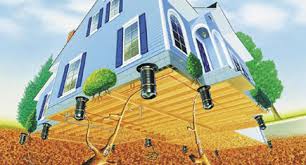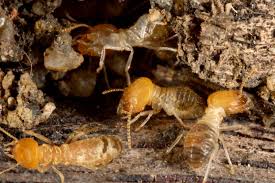Get This Report about Termite Control Services In Adelaide
This page describes the three kinds of subterranean termite, drywood and dampwood.
Termites are categorized depending on their nesting and feeding habits: dampwood, drywood and subterranean.
Subterranean termites are the most common kind of termite that infests timber in structures and are among the most destructive pests. Outdoors they infest timber that is dead in contact with the dirt, such as fallen trees, stumps and branches. They prefer wood which has some degree of rust which makes it easier for them to digest it, even though they can digest wood. .
The Definitive Guide for Termite Control Specialists
Subterranean termites need to be near a supply of moisture to live, where they can acquire moisture from the 30, making their nests in or near the earth. They tunnel through dirt to get timber or moist soil and they tunnel into the soil to reach moisture. .
The termites use dirt as a substance to build nests and shelter tubes, which can be made up of wood soil, faeces and saliva. Some species construct carton nests above ground and construct shield tubes (also referred to as sand tubes) to connect the nest to the ground.
Foraging is dependent on the weather, with higher activity in summer and little action in winter or conditions after rainfall. In tropical regions they can forage with peaks during warmer conditions.
Termite Control Specialists for Dummies
Termites reside inside pieces of timber, wholly in colonies, generally less than 1000 individuals. There might be several small colonies like a piece of furniture inside a piece of timber or object. They can feed across rings as is subterranean termites, so that the galleries don't adhere to the grain of timber, but they tend to steer clear of heartwood.

Colonies may grow for many years undetected until the wood breaks or the swarm. The alates, that are the sole casts check my source that leave the nest, may not be made for decades in a colony that was new before the population reaches a vital point. Then they leave the nest to set up and discover a new website to mate and start a new colony, usually not. .
Dampwood termites infest decayed wood that remains moist because of contact or, for instance, through a water flow in a building. They are likely to infest timber that's outside stump or logs in contact with the ground.

The smart Trick of Termite Control Specialists That Nobody is Talking About
Dampwood termites live inside the wood that they feed and create open galleries. As with drywood termites, they can infest wood for years until they are discovered, which is most likely when the alates swarm from a mature colony. Swarming may occur over a few months, with species swarming at times.
They are a sign of a moisture problem if they're found in a building. By taking away the supply of moisture they are generally minor pests and may be controlled in buildings. In trees that they tend to feed on wood that is dead and rotting.
Termite species can be difficult to recognize, even to the experts. Identification is usually based on the soldiers, which is the caste that has the features that were most easily distinguishable.
Of the pest species listed above, it is the Coptotermes species which are public enemy number 1 in Australia.
Little Known Questions About Termite Control Specialists.
The soldier's head is yellowish and rectangular with darker thin mandibles. Body is left up to 7 mm long. It is easily confused with two other native Coptotermes species, including C. frenchi and C. lacteus (Victoria Museum)
The soldiers generate a white sticky liquid out of an opening (fontanelle) on the front of head when defending the nest from attack.
Mounds are not typically built by species, except in Queensland and other tropical regions of Australia. They mostly nests in trees, sticks, stumps, buried timber spaces, around houses under buildings and in walls. Favoured trees for nesting are various eucalypts oaks and peppercorns. The colony is mostly located at the part of the trunk or the root crown.
More About Termite Control Services In Adelaide
Though Mastotermes darwiniensis is the more destructive locally across its range in tropical northern Australia coptotermes acinaciformis is the most destructive termite species in Australia overall. C. acinaciformis attacks all lumber structures and damages forest and ornamental trees as well as fruit trees.